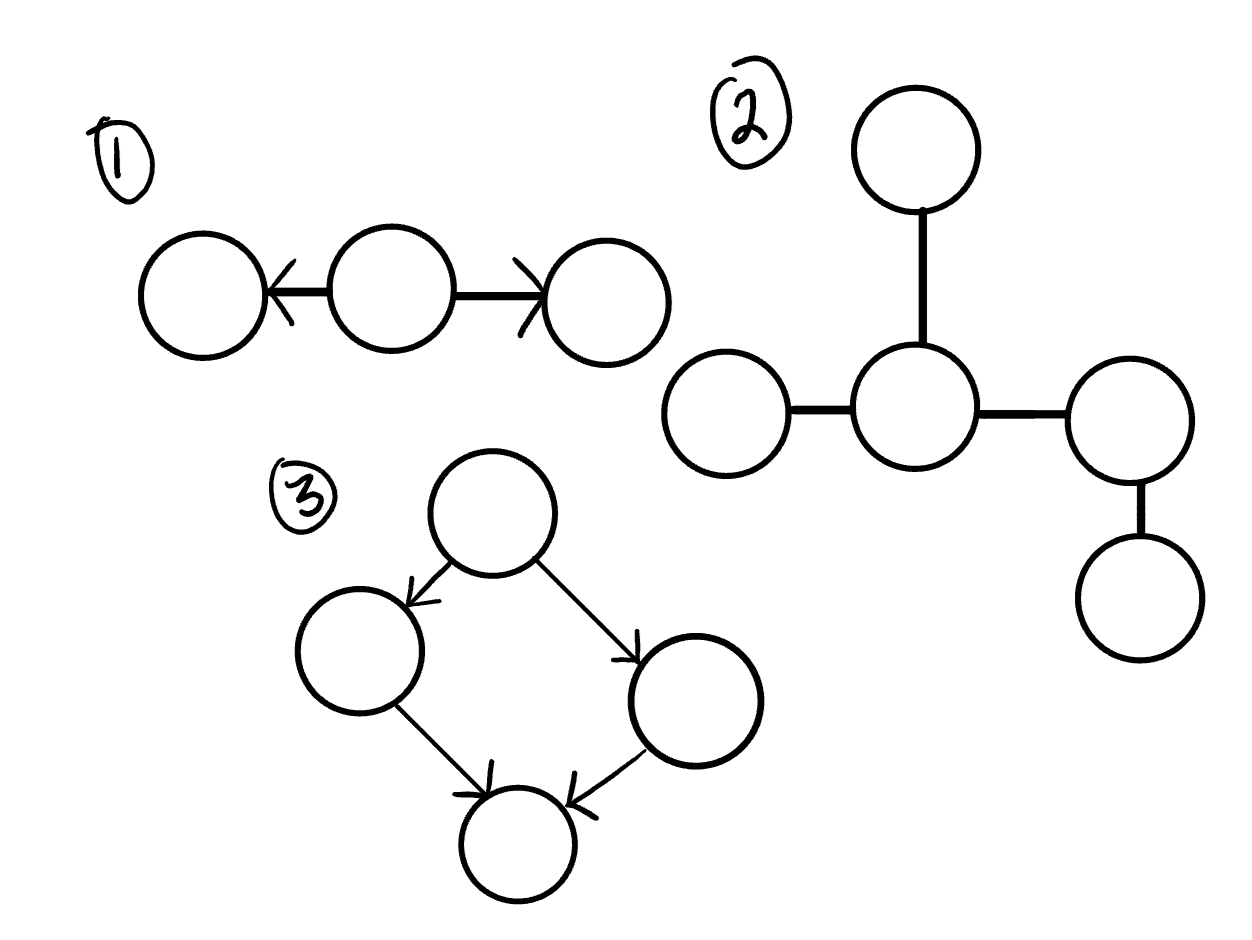reading-notes
Graphs
A graph is a non-linear data structure that can be looked at as a collection of vertices (or nodes) potentially connected by line segments named edges.
Terminology:
- Vertex: also called a “node”, is a data object that can have zero or more adjacent vertices.
- Edge: is a connection between two nodes.
- Neighbor: The neighbors of a node are its adjacent nodes
- Degree: The degree of a vertex is the number of edges connected to that vertex.
Directed vs Undirected
- Undirected Graphs : graph where each edge is undirected or bi-directional.
- Directed Graphs : also called a Digraph is a graph where every edge is directed.
Complete vs Connected vs Disconnected

-
Complete Graphs: A complete graph is when all nodes are connected to all other nodes.
-
Disconnected Graphs: It is a graph in which some node may not have edges.
-
Connected Graphs : A connected graph is graph that has all of vertices/nodes have at least one edge.
- It is complelty possible to have standalone nodes or edges (also known as islands) in a graph data structure.
Acyclic vs Cyclic:
- Acyclic Graph: An acyclic graph is a directed graph without cycles.
A cycle is when a node can be traversed through and potentially end up back at itself.

- Cyclic Graphs:
A Cyclic graph is a graph that has cycles.
Traversals
We can use either use Breadth First or Depth First in travelling in the graph.
Breadth First
Breadth first traversal is when you visit all the nodes that are closest to the root as possible
Algorithm:
Enqueuethe declared start node into the Queue.- Create a loop that will run while the node still has nodes present.
Dequeuethe first node from the queue- if the Dequeue‘d node has unvisited child nodes, add the unvisited children to
visitedset and insert them into the queue.
Depth First
In a depth first traversal, we approach it a bit different than the way we do when working with a depth first traversal of a tree. Similar to how the breadth-first uses a queue, we are going to use a Stack for our depth-first traversal.
Algorithm:
Pushthe root node into the stack- Start a while loop while the stack is not empty
Peekat the top node in the stack- If the top node has unvisited children, mark the top node as visited, and then
Pushany unvisited children back into the stack. - If the top node does not have any unvisited children,
Popthat node off the stack - repeat until the stack is empty.
Real World Uses of Graphs
- Graphs are extremely popular when it comes to it’s uses. Here are just a few examples of graphs in use:
- GPS and Mapping
- Driving Directions
- Social Networks
- Airline Traffic
- Netflix uses graphs for suggestions of products